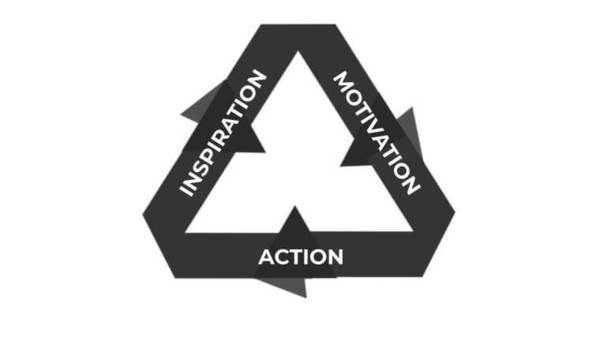The do something principle (expanded)
There are some gaps in Mark Manson's Do Something principle that we need to fill in.
Mark Manson’s Do Something Principle is wonderful. The simplicity of it is great, but as we dive deeper into what actually gets to take action, there are some gaps that may be helpful to fill in.
What is the Do Something Principle?
Most people believe that action is a result of motivation, which is a result of inspiration. I.e. you need motivation to take action, and inspiration to be motivated.
However, this idea that you need motivation to take action is false. Most of the time, we aren’t motivated, yet still need to get stuff done. Deadlines don’t inspire us, they force us. As much as we want to believe it, the inspirational YouTube videos don’t spring us into immediate action.
Instead, the Do Something Principle says to take action first , in the smallest way possible, and that the motivation and inspiration will follow. They’re the products of action, not the cause .
You can look at it as a wheel: from action to inspiration to motivation to action to inspiration to motivation…
However, there’s a couple of gaps that I started thinking about. How do we cross the bridge from action to inspiration? And what turns our motivation into action?
If you’re able to hop right in, and start on something for two minutes, that’s great. But what’s the bigger picture? How do things like dopamine and cost-benefit analysis play into this flywheel?
The Do Something Principle expanded
After toiling away, I was able to create v1 of the new and improved Action Loop:
Let’s explain what we have here, shall we?
Inspiration
At the top, we have inspiration. This is where we say “ wow ,” either about ideas in our own head or by seeing things that other people have done. Seeing people build businesses is inspiring to me. The question “what gets us to take action?” inspires me.
Motivation
Inspiration then leads to motivation. This is where we say “ I want that ,” either internalizing external inspirations, and figuring out what it’d look like if we did that, or through one of our main systems of motivation, dopamine.
Clarity
After this burst of motivation, the craving to take action, we need to figure out what that looks like. This is figuring out the “how.”
Our other system of motivation, Cost-Benefit Analysis, figures out if the cost of action is worth the end result. If we don’t have the clarity on that very first step, or if we size up the problem bigger than what we can handle, it’s possible to fall out of the Action Loop.
Action
Once we know what we’re going to do and how, we can actually do it! Focus and flow help compound our efforts here. The longer we can stay in this space, the better.
Achievement
After we’ve done something, we’re usually able to step back and say “ hey, I did something! ” Depending on our expectations, this can lead us back into inspiration, and keep the momentum going. If you expect perfection, but aren’t able to achieve that, then you’ll most likely fall out of the loop.
Thanks for reading!
Hey you. Thanks for reading to the bottom!
If you enjoyed this, or have any thoughts you’d like to share, feel free to drop it in the comments below!
I hope you have a wonderful day!



